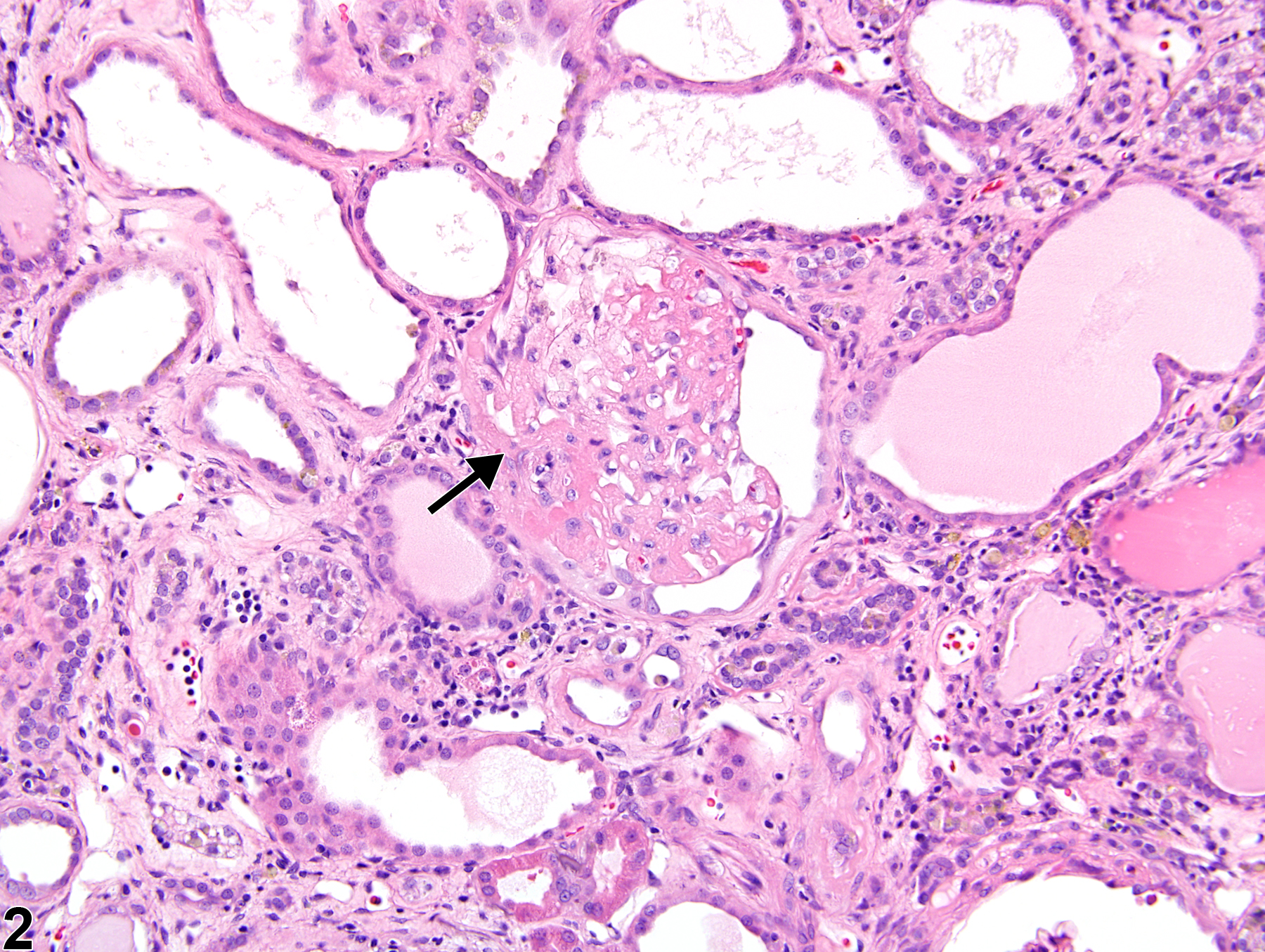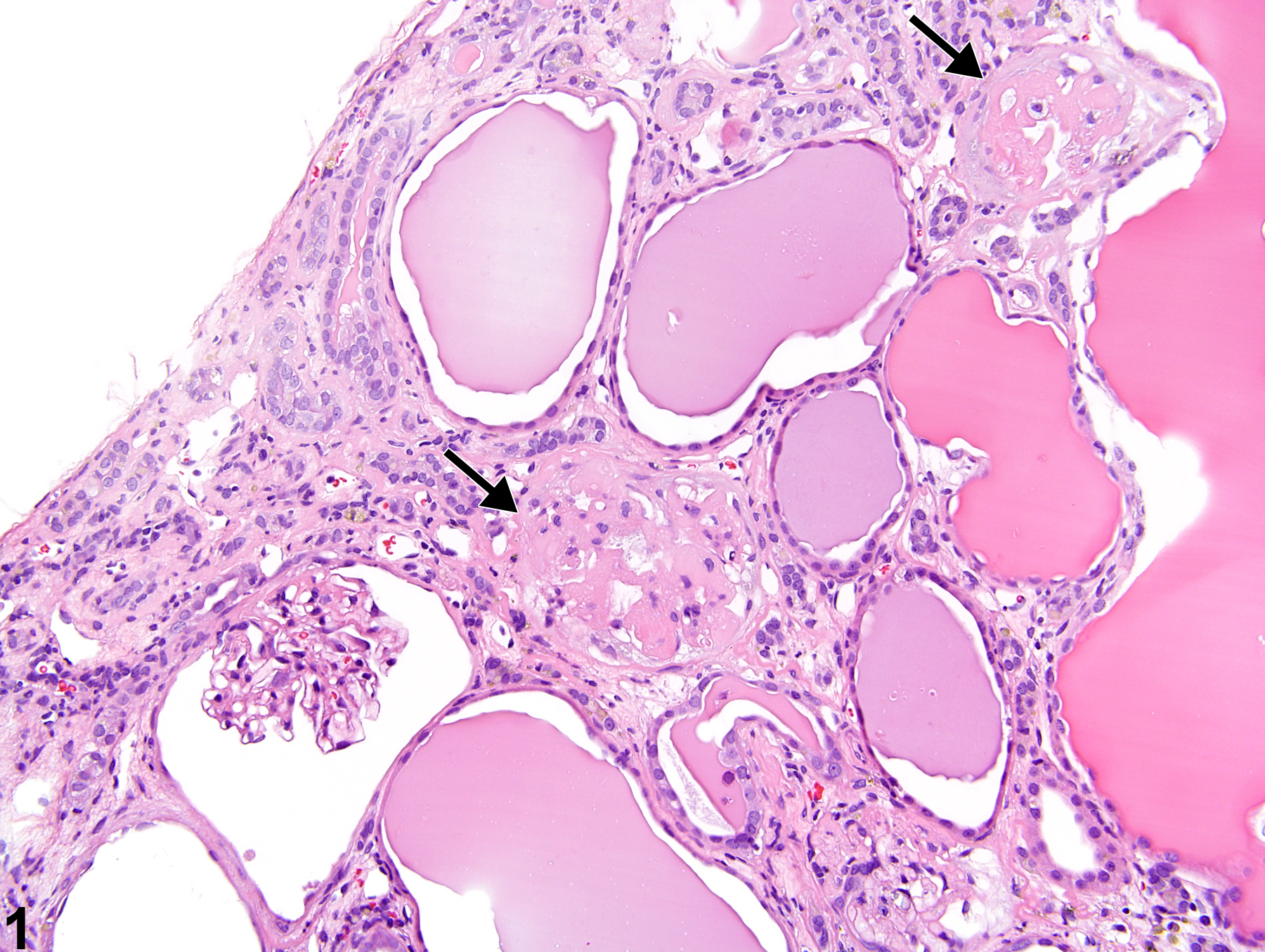Urinary System
Kidney - Glomerulosclerosis
Narrative
Frazier KS, Seely JC, Hard GC, Betton G, Burnett R, Nakatsuji S, Nishikawa A, Durchfeld-Meyer B, Bube A. 2012. Proliferative and non-proliferative lesions in the rat and mouse urinary system. Toxicol Pathol 40:14S-86S.
Abstract: http://www.ncbi.nlm.nih.gov/pubmed/22637735
Kidney - Glomerulosclerosis in a male Wistar Han rat from a chronic study. Affected glomeruli often have adhesions (arrow) between the glomerular tuft and Bowman�s capsule.



